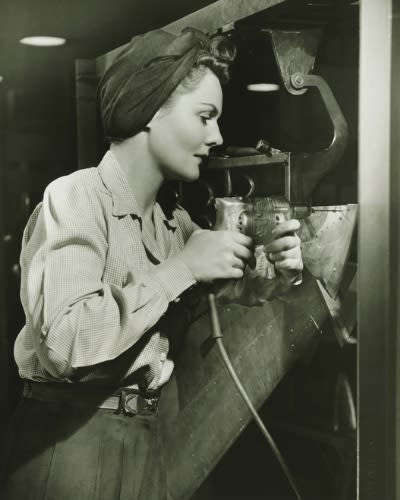No matter who you are, where you’re from, or what you believe in – there’s one unifying quality that all of us share. We are here because of women.
Every day you interact with something invented by a woman. Phones wouldn’t have Caller ID. You’d be drinking coffee grinds if not for the invention of filters. Commercially-produced ice cream, medical syringes, and the first computer programming language – all exist because of women. Women have spearheaded important legislation, founded groundbreaking companies, and composed our favorite songs.
These are just some of the reasons that on March 8th, the world celebrates the achievements of women in a holiday known as International Women’s Day. As the world grows both in population and with technological advancements –the role of women does, too. However, it is not without barriers.
With that in mind, let’s talk about what International Women’s Day is, why we celebrate it, and why it’s more important than ever to recognize and highlight women’s accomplishments.
What Is International Women’s Day, and Why Is It Celebrated?
International Women’s Day is a globally recognized holiday honoring the history of women, their accomplishments, their sacrifices, and the mark they’ve left on the world. Developed in response to a growing need for women’s rights (chief among them, the right to vote), International Women’s Day is more than just a celebration. It is a reminder that women have had to climb just to reach the ground floor.
There have been strong female roles all throughout history. But a Google Image Search for “the most powerful leaders in history” right now, would fill your screen with pictures of men.
Women have long been at a disadvantage in a number of ways. Their average pay for the same work is lower. Their products are more expensive. They even have fewer opportunities in leadership roles.
The economic and experiential disparity between gender roles has a profound impact on women. Even today, true equality does not exist between the sexes.
We celebrate International Women’s Day because, despite the tremendous impact women have generated, representation in a variety of industries is still disparate, because the women that came before us deserve recognition for their contributions, and because we still have to fight.
How Has the Day Changed Over the Years?
Originally, International Women’s Day was largely considered a communist celebration due to its significant adoption in communist countries. In reality, the holiday is rooted in America.
In 1857, female textile workers gathered in protest over unfair working conditions, laying the groundwork for later protests. National Women’s Day was first observed in 1909 by the Socialist Party of America with the intention of promoting equal rights for women and women’s suffrage. It quickly gained momentum with international socialist organizations. In 1911, over one million supporters participated in over 300 demonstrations in Austria, Denmark, Germany, and Switzerland. Organizations formally accepted the date of March 8th in a variety of countries in 1913.

Interest grew across the globe, even as the world was at war. With men fighting overseas, women began to replace them in the workplace. No longer limited to being battlefield nurses, women worked as switchboard operators, ammunition testers, and other vital positions. Gradually, their participation in the workforce increased, and what was once rare became common. As more women joined the workforce, they saw firsthand how they were being treated unfairly.
As women and men alike in multiple countries began to recognize the inequality women were experiencing, the need for large-scale recognition became apparent. In 1975, the United Nations formally recognized International Women’s Day at the first Conference on Women in Mexico City.
The commemorative day has evolved over the years, from mass protests asking for equal rights to honoring the important work that has been done. Beginning in 1996, the UN announced a theme for each International Women’s Day. In 2023, the theme is “DigitALL: Innovation and Technology for Gender Equality.”
Today, 27 countries celebrate International Women’s Day, regardless of religion or political affiliation.
What Progress Has Been Made So Far, and What Still Needs to Be Done?
The large majority of the audience reading this is from the United States, and we’ll discuss the many important achievements of American women. It is not our intention to diminish the work and accomplishments of our international friends. Our progress is representative of one facet of a much larger group.
The first Women’s Rights Convention was held in Seneca Falls, New York, in 1848. It wasn’t until 1917 that America had its first female representative in Congress. When women secured the right to vote in 1920, it marked the success of a 72-year battle for the most basic of rights. Though the goals have changed, the fight continues.
In 1960, the first FDA-approved birth control pill forever changed a woman’s right to control when and if she has children. Soon after, in 1966, author and activist, Betty Friedan, helped found the National Organization for Women.
Sandra Day O’Connor became the first female Supreme Court justice in 1981, paving the way for five more women to achieve that honor. There have been 109 male justices by comparison. We’ve also had 423 female U.S. representatives, delegates, resident commissioners, and senators out of the over 12,000 men who have held similar offices.
Women are still creating firsts. It was only in 2013 that the U.S. military lifted the ban on women serving in combat positions. In 2020, less than a handful of years ago, the United States saw the election of its first female vice president. We have a long way to go – including recognizing, supporting, and protecting ALL women.
The only way onward and upward is with continued work toward equity and equality.
What is the Difference Between Equity and Equality?
When discussing women’s rights, people often pair it with a call for equal rights or equality. The problem with equality is that some may still have a harder time succeeding, even when they have the same access. Circumstances may be equal, but they still may not be fair. What disenfranchised persons (in this case, women) often need is equity. Let’s discuss the differences between equity and equality.
Equality is a state of being equal. Everyone gets the same opportunity – no head starts. Everyone starts the test at the same time, regardless of ability, prior knowledge, or any other factors that contribute to success.
But what if you’re a new student and there’s a test on your first day? What if you’re new to the country and don’t understand the language? What if the school bus was late, and you get to class five minutes before the bell rings? Equality means you’re still going to take that test regardless of your individual circumstance.
Perhaps your teacher gives you a pass and lets you study before the test. They may get a copy of the exam in your native language or have you work with a teacher who can translate. They may allow for a makeup exam. That is equity. Equity is more aligned with justice. It takes into account that everyone’s situation is unique and, therefore, the conditions for success are different.
Here is an excellent illustration of the difference between equality and equity:
The state of women’s rights is still unequal. Women will never be equal without equity. Women would not need a leg up if they were already equal. As society works towards improving women’s rights, it is equity that ensures women’s equality.
How Can We Work Towards Gender Equity and Equality in Our Everyday Lives?
To produce situations where women are truly experiencing equality, society must address the disparities in opportunities for women.
Long cited as a primary indicator of inequality, the wage gap is still an issue, despite all the strides women have made collectively in the workplace. Depending on age, women make anywhere from 8% to 27% less than men.
One of the many factors that contribute to unequal wages is occupational segregation. Society has called whole industries women’s work. Hollywood even highlights the idea as a plot device. In the movie, MeettheParents, Robert DeNiro’s character repeatedly mocks the idea of a male nurse. Secretaries, teachers, waitstaff, and healthcare workers are all critical roles in our society and are just some of the needlessly gendered occupations we are familiar with. While we’ve seen men enter those fields more and more, women still far outnumber them.
How do we address occupational segregation and, thereby, decrease the wage gap? One way is by getting women into nontraditional industries. Efforts to recruit women in STEM occupations are nothing new, but even in 2023, women make up only 35% of the STEM workforce. College educations have only grown in cost, making it necessary to create sustainable, affordable opportunities for girls and women to pursue those careers. Employers also must do better to recruit and employ women in technology. We must train, hire, and support more women for equality to be possible. We must also work to protect women in these industries from discrimination, harassment, and violence.
Another barrier to women’s equality is the tremendous need for childcare. How many women do you know that have abandoned careers to take care of their children? Not that there’s anything wrong with raising kids, but many often regard it as the woman’s responsibility. Private childcare is enormously expensive, and those who need it most often can’t afford it. Finding solutions means local and national focus on creating more daycare options as well as making overnight childcare feasible. An investment in childcare means more women are able to access the resources they need to increase and develop skills, generate new opportunities, and, ultimately, experience parity with their male counterparts.
Making education accessible and possible is just one of the ways we can address equality and equity as a nation. Committing to this work is a lifelong effort to ensure those who come after us do not face the same struggles. It means understanding your rights, voting with intention, and becoming actively involved in causes that support women. It also means engaging men in advocacy for women, speaking up for yourself as well as those without a voice, and thinking about women’s rights beyond our borders.
How Can We Support Each Other in the Fight for Gender Equity and Equality Around the World?
When we talk about International Women’s Day, we cannot forget that we’re not the only women seeking justice. While American women have made significant progress, not every woman around the world enjoys the same freedoms we do. Women around the globe face discrimination, and that puts them at risk in some cases.
An easy way to address such serious concerns is to donate to relevant organizations that are actively engaged in helping women in other countries. Donating funds makes existing work possible and sustainable. However, there is plenty more that you can do to help fight for gender equity and equality for women everywhere.
- Use what superpowers you have to help. Can you design websites? You can donate your services or create your own. Are you an educator? Maybe you can design lesson plans or other educational materials to teach people about what’s happening and how they can help. Even better, teach younger generations about women’s rights and the lack thereof. Everyone has a useful gift – it need not always be monetary in value.
- Write to politicians about your concerns. Many people underestimate the value of a concerned letter (or email).. Our government provides aid to other countries – make sure your representatives know it’s important to you. Using your voice to help others be heard is a meaningful way to support other women.
- Support refugees in your community. There are designated resettlement areas all across the country. Refugees have limited support beyond being placed, some employment assistance, and language support. Women, in particular, experience trouble adjusting because of the vast differences in freedoms here. Volunteer to help refugees in your area become acclimated to their new neighborhoods, find resources, and begin to build a life here.
- Be a loud, unapologetic advocate for ALL women’s rights. This is self-explanatory.
The same things we do for ourselves can easily be done for women across the globe. Speak out. Ask what you can do. We’re on the right trajectory. We just need to keep going.
Final Thoughts
International Women’s Day is about supporting women and celebrating their successes. Liquid Web and its Family of Brands are proud to work with some of the best and smartest minds in tech, many of them women. We value the many contributions our talented female staff are responsible for, and we’ll keep bragging about their successes long after March 8th. We hope you will cheer on the great women in your life, too.





